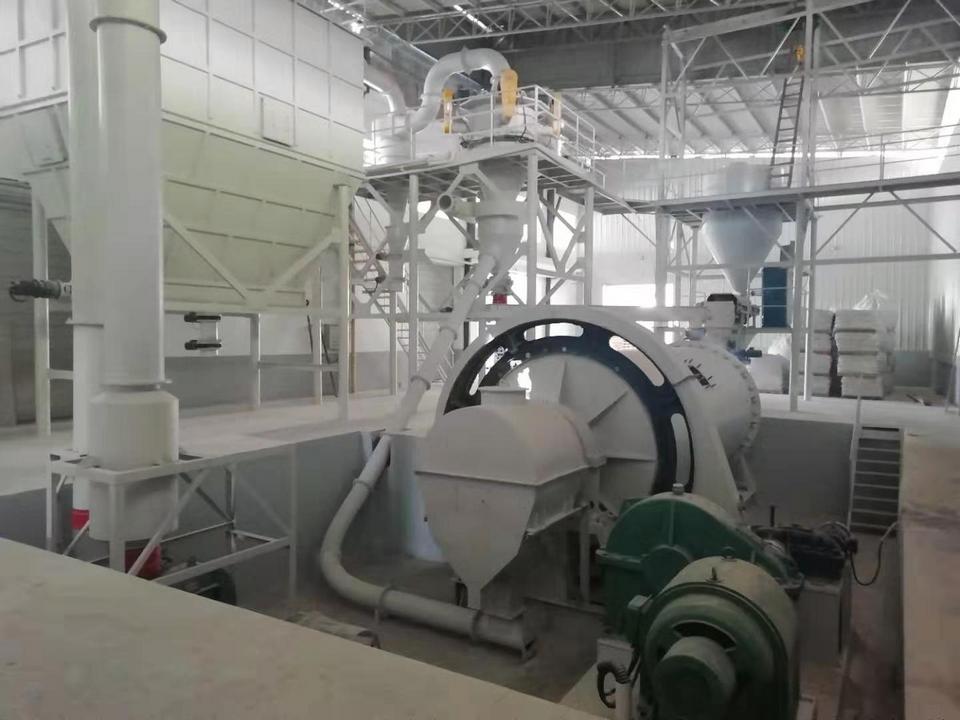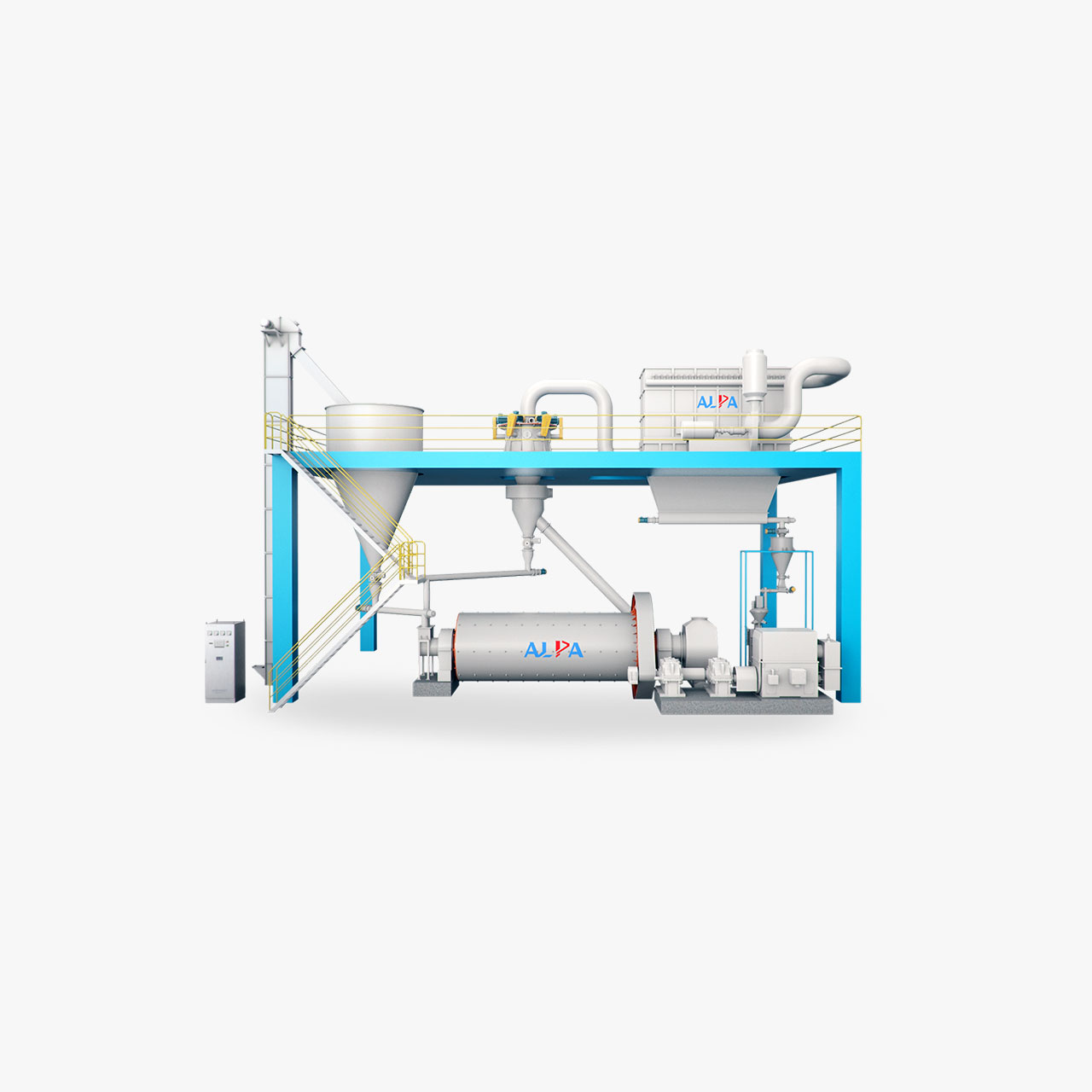What are the reasons for the vibration of the ball mill?
For the production line of the aerated concrete industry, the ball mill is an indispensable equipment in the grinding production line. However, during the production process, the transmission system sometimes vibrates greatly. So what are the reasons for the vibration of the ball mill?
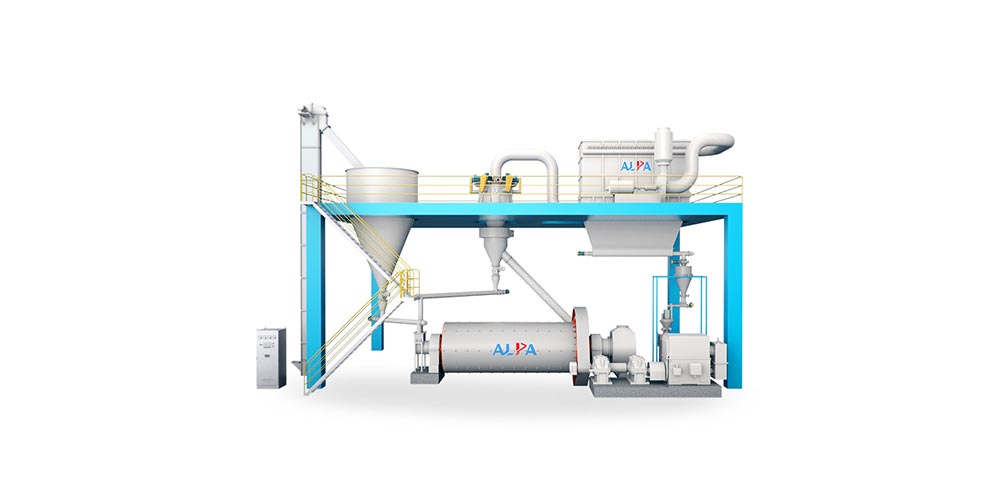
- The teeth of the gear will enter the mud during operation, resulting in poor lubrication
The ball mill is an open gear transmission device, equipped with gears and inner and outer covers, but the sealing performance is still poor. When the bushing bolts near the large gear ring are loose, the leaked mud easily enters the gear meshing surface, destroys the lubricating oil film on the tooth surface, and generates great impact noise and transmission system vibration.
- Wear of pinion bearings
There is a double row spherical roller bearing on both sides of the pinion bearing. After a period of use, the bearing parts wear out, the gap between the inner ring, the outer ring and the roller increases, and radial runout occurs when the pinion shaft rotates, which will cause the gear tip clearance to change continuously. It is prone to shock, vibration and noise, and the surface wear of gear teeth is aggravated.
- The tooth surface of the mill gear is severely worn
After the ball mill has been running for a long period of time, the upper tooth surface of the pinion gear is first ground from the concave platform, and the tooth side clearance increases. When the ball mill is running, impact vibration occurs, and a great impact sound is generated, and the wear between the tooth surfaces is aggravated.
- Vibration caused by the displacement of the transmission parts
After the ball mill works for a long time, the anchor bolts of the motor, reducer and pinion bearing seat in the transmission part will sometimes loosen, and the transmission part will move, so that the axis is not in the same straight line, and vibration occurs. The transmission system of the ball mill should be stopped for testing, and then the transmission system should be re-aligned.
- Wear of the nylon pin of the coupling
After the nylon pin works for a certain period of time, the surface of the cylinder will wear and the diameter will become smaller, which will cause shock and vibration of the coupling half. At this time, the nylon pin should be replaced in time to avoid damage to the coupling.
- Motor speed is unstable due to short circuit between turns
During operation, the motor current is unstable, and at the same time, the large and small gears' damage current fluctuations will cause large periodic vibrations.
How to ensure the working efficiency of the ball mill?
Ball mills are mainly used in ore grinding and milling industries. Many materials in daily life need to be processed by ball mills. This also shows that ball mills play an important role in the industry.
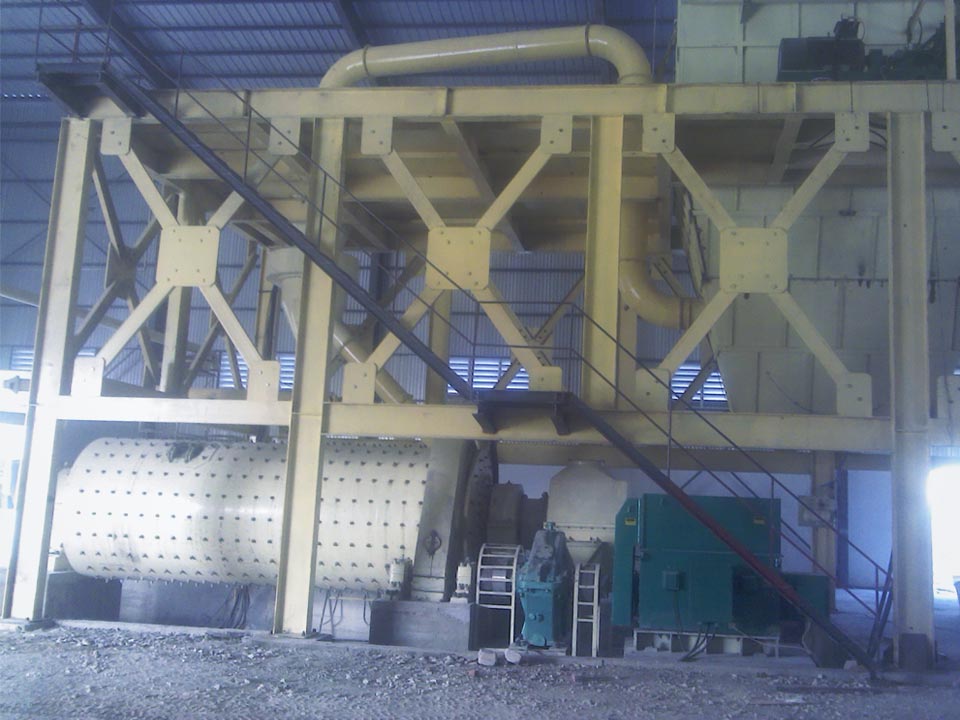
How to ensure the working efficiency of the ball mill? What are the prerequisites for the stable operation of the ball mill?
- Choose suitable ball mill equipment (determine the type of ball mill)
Ball mills can be divided into many categories according to different uses. Different types of ball mills have considerable differences in function and structure. To make the ball mills run stably and efficiently, you need to choose the correct type of ball mill.
- Selection of supporting equipment
As a stand-alone equipment for grinding ore, the main work of the ball mill is to grind the ore from large particles into small particles. However, the ore production line often includes many supporting equipment to operate together. The ore is first crushed and then enters the ball milling machine to powder, and then goes through the classification and beneficiation process. The output has a great influence. The particle size and uniformity of the crusher directly affects the quality of the feed of the ball mill. After relatively good materials enter the ball mill, the grinding time and power consumption will be relatively reduced, which improves the work efficiency of the ball mill. .
- Maintenance is very important
During the use of large-scale equipment such as ball mills, it is in direct contact with the ore, and the liner needs to be regularly inspected and replaced. If it is not replaced in time, it may damage the equipment cylinder and reduce the output. It is also necessary to check the wear of the motor, reducer gears, gear oil, bearings and bearing seats, and the oil circuit. Once there is a decrease in output or abnormal noise during the production process, it needs to be stopped immediately for inspection. Find the source of the problem, repair and replace parts in time. Therefore, the maintenance of the ball mill is a key factor affecting the efficiency of the equipment.
- Perform operations in accordance with operating procedures
The parameters of the maximum load and the longest working time of the ball mill are based on rigorous scientific calculations, which specifically involve many professional knowledge such as materials science and mechanics. Many users in order to increase output, extend the normal use cycle of the equipment or modify the equipment operating parameters by themselves, these are not advisable. It does increase the economic benefits for the user in the short term, but the life and safety of the equipment are greatly damaged. Hidden dangers have a great impact on long-term continuous production.
How to ventilate the ball mill
Ventilation in the ball mill is a problem that should be paid attention to during the work of the beneficiation ball mill equipment. The material generates a lot of heat during the grinding process, which greatly increases the temperature in the mill and the temperature of the material exiting the grinding, which deteriorates the operation and affects the production efficiency of the ball mill. Therefore, internal ventilation is very important in the work of the ball mill, which has a significant impact on the output and quality of the mill. It can be said without hesitation that the internal ventilation of the ball mill equipment can directly affect the efficiency of the grinding.

The ventilation effect of the ball mill is roughly in two aspects: one is to discharge the fine powder in the mill in time, so as not to affect the grinding efficiency; second, to reduce the temperature in the mill to avoid the grate of the gypsum dewatering tail bin paste ball. When the material moisture is too large and the mill has poor ventilation, the water vapor in the mill is difficult to discharge, not only the wet fine powder adheres to the grate, but also reduces the throughput and flow rate of the material per unit time. At the same time, when these grinding bodies grind materials, due to static electricity, the working surface of the liner will be attached to form a cushion layer, which will greatly weaken the impact and crushing function of the grinding bodies on the materials. When the thickness of the fine powder adhered to the surface of the lining board reaches 1mm, the impact force of the grinding body on the material can be reduced to one third when there is no material, which in turn leads to a decrease in the output of the mill and an increase in the power consumption of the grinding.
In the face of these problems of the ball mill, a simpler solution is to add an axial fan on the top of the exhaust tube of the mill tail, and at the same time seal and plug the mill rotary screen, discharge chute and other parts to prevent the short circuit of the mill ventilation due to air leakage. When the ball mill is working, the torque is transmitted to the large and small gears of the ball mill through the motor and reducer, so that the barrel of the ball mill rotates. Due to the rotation of the barrel of the ball mill and the cylinder liner, a part of the steel ball is brought to a certain height. The free fall motion produces impact force and hits the material in the cylinder, and the rest of the steel balls fall down to produce friction and the material is mixed together. As the cylinder rotates, it constantly collides and grinds with the material, so that the inside of the mill is ventilated smoothly. , It also completely solves the problem of grinding head dust. Similarly, the air lock system must also be done well, otherwise, the fan air will be drawn directly from the discharge port, forming a ventilation short circuit, and there will be not much air in the mill.
In the production of ball mills, if you have a detailed understanding of the importance of good ventilation of the ball mill, you must strengthen the management of the barrel ventilation of the ball mill and achieve reasonable ventilation, thereby improving the production efficiency of the ball mill and the pass rate of the milled materials.
Several Methods to Improve the Grinding Efficiency of Ball Mill
The low grinding efficiency of the ball mill, low processing capacity, high production energy consumption, and unstable product fineness are the problems that most concentrators will encounter. How to effectively improve the grinding efficiency of the ball mill is an important issue.
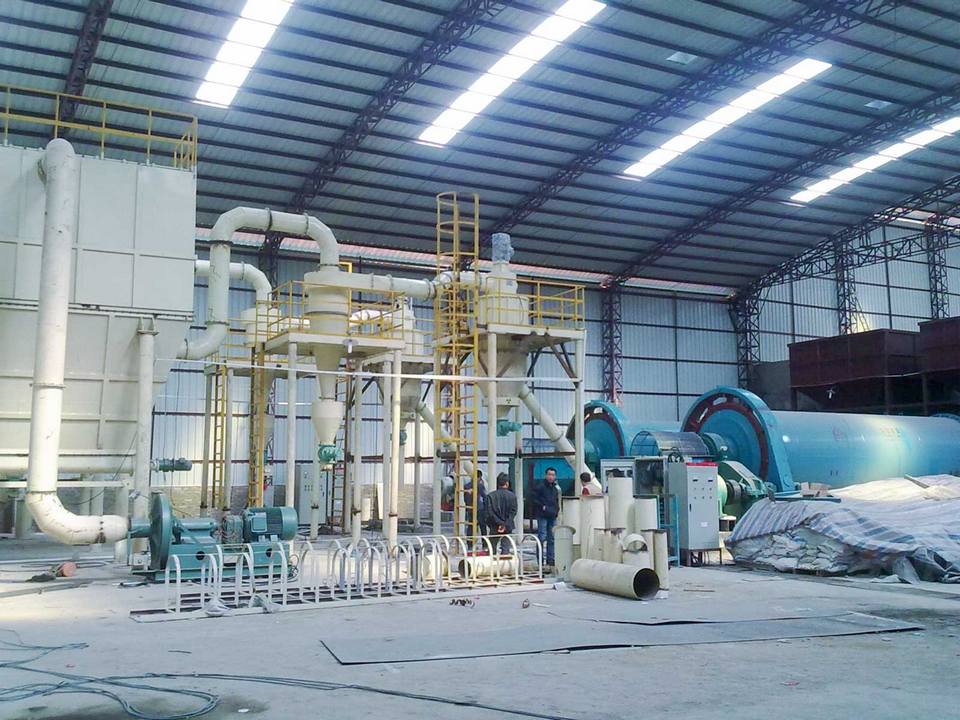
- Change the grindability of raw ore
The hardness, toughness, dissociation and structural defects of the original ore determine the difficulty of grinding. If the hardness is small, the ore is easy to grind, the wear of the mill liner and the steel ball is small, and the energy consumption is small; otherwise, the situation is just the opposite. The nature of the original ore directly affects the productivity of the factory.
In production, if it is difficult to grind ores or needs to be finely ground, if economic and on-site conditions permit, a new treatment process can be used to change the grindability of the ore:
One method is to add some chemicals in the grinding process to improve the grinding effect and improve the grinding efficiency.
Another method is to change the grindability of the ore, such as heating the minerals in the ore, changing the mechanical properties of the entire ore, and reducing the hardness.
- More crushing and less grinding to reduce the grinding particle size
If the grinding particle size is large, the mill needs to perform more work on the ore. In order to achieve the required grinding fineness, the workload of the ball mill is bound to increase, so energy consumption and power consumption will also increase.
In order to reduce the size of the grinding feed, it is required that the particle size of the pulverized product should be small, that is, "more pulverize and less grind". Moreover, the grinding efficiency is significantly higher than the grinding efficiency, and the grinding energy consumption is relatively low, about 12%-25% of the grinding energy consumption.
- Reasonable filling rate
When the speed of the ball mill is fixed and the filling rate is large, the steel ball will hit the material many times, the grinding area is large, the grinding effect is strong, but the power consumption is also large. The filling rate is high, which is easy to change the motion state of the steel ball and reduce the impact effect on the large particle material. On the contrary, the filling rate is too small, and the grinding effect is poor.
At present, many mines set the filling rate to 45%~50%, which is not necessarily strictly reasonable, because the actual conditions of each beneficiation plant are different. Copying the ball load data of others cannot achieve the ideal grinding effect. It should be determined according to the situation. .
- Reasonable ball size and proportion
Due to the point contact between the steel ball and the ore in the ball mill, if the diameter of the ball is too large, the crushing force is also great, causing the ore to break along the direction of the penetration force instead of along the interface. Crushing is not selective and cannot meet the purpose of grinding.
In addition, in the case of the same steel ball filling rate, the steel ball diameter is too large, resulting in too few steel balls, the possibility of crushing is low, the phenomenon of excessive crushing is aggravated, and the product particle size is uneven. Because the ball is too small, the crushing force on the ore is small, and the grinding efficiency is low. Therefore, the correct ball size and ratio have an important influence on the grinding efficiency.
The principle of daily maintenance of ball mill
Ball mills can play a greater role in industrial production only after good daily maintenance.
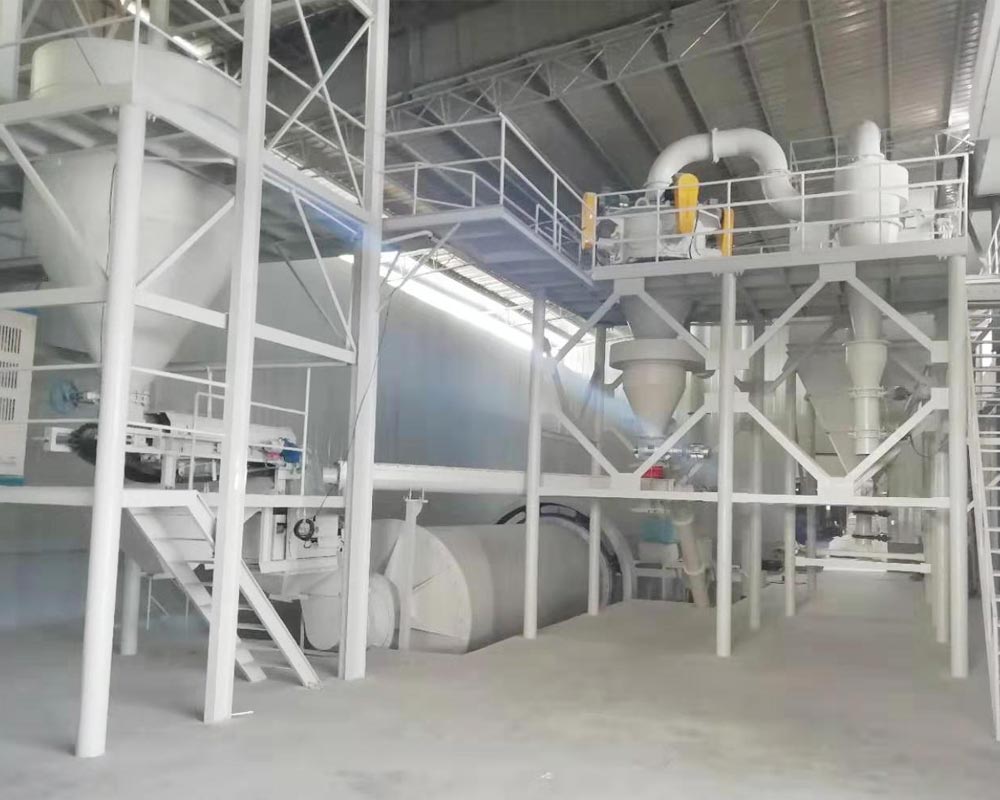
1. All lubricating oil should be discharged when the mill is put into continuous operation for one month, thoroughly cleaned, and replaced with new oil. In the future, the oil change will be carried out approximately every 6 months in conjunction with the middle repair.
2. The lubrication condition and oil level of each lubrication point are checked at least every 4 hours.
3. When the mill is running, the temperature of the main bearing lubricating oil should be lower than 55°C.
4. When the mill is running normally, the temperature rise of the transmission bearing and reducer should not exceed 60℃, and the high temperature should be lower than 70℃.
5. The large and small gears drive smoothly without abnormal noise.
6. The ball mill runs smoothly without strong vibration.
7. Check the motor current from time to time for no abnormal fluctuations.
8. During routine maintenance, ensure that the connecting fasteners are not loose, and there is no oil leakage or water leakage on the joint surface.
9. The wear condition of the steel ball should be added in time.
10. If an abnormal situation is found, the grinding should be stopped immediately for maintenance.
11. The mill liner should be replaced when it is 70% worn or there are 70mm long cracks.
12. When the liner bolts are damaged and the liner becomes loose, replace it.
13. Check that the main bearing should be replaced when it is severely worn.
These maintenance principles seem cumbersome, but in fact the operation is very simple. As long as the production of the ball mill is treated seriously and carefully, and the daily maintenance is done, the economic benefits that the ball mill can bring will be huge.
How to solve the sudden failure of the ball mill
Ball mill equipment is the equipment that accounts for a considerable investment in the entire concentrator, accounting for more than 50%. Therefore, ensuring the normal operation of the ball mill is a necessary condition to ensure the normal production of the entire concentrator. However, when the ball mill is in use, some sudden failures often occur, which affects production efficiency. So how to effectively solve or avoid these sudden failures?
Sudden failures of ball mills are generally caused by multiple reasons such as long-term high-speed operation and improper operation.
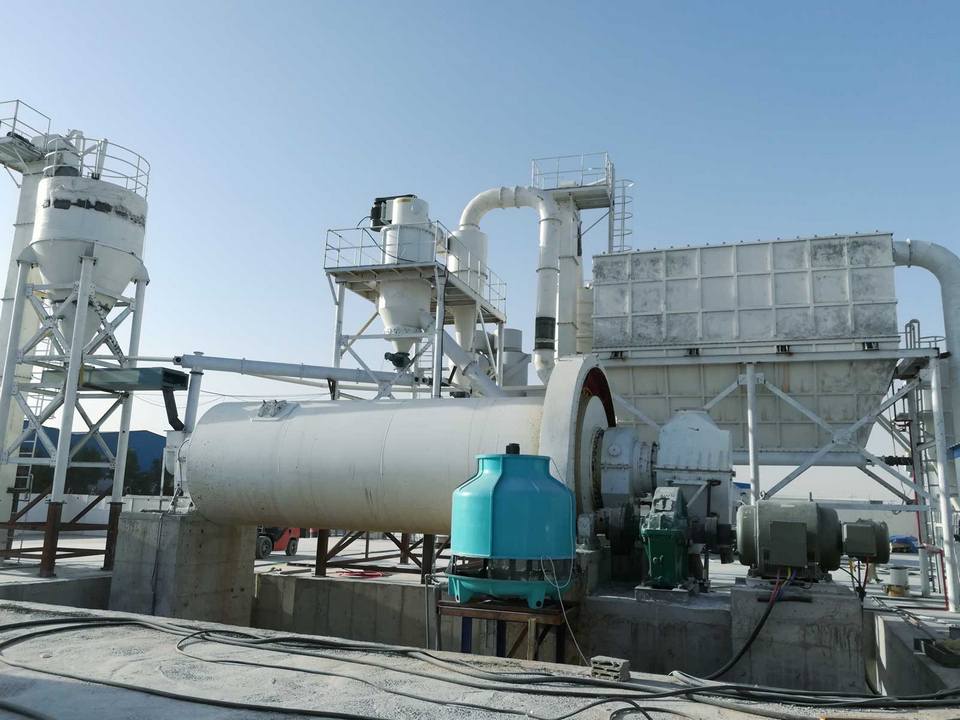
- The stator coil of the ball mill is broken down
In the entire system of the ball mill, there will be iron-containing dust in the air around the material. After a long time of operation, the iron-containing dust will adhere to the coil of the ball mill stator. When it reaches a certain thickness, it will cause the surface of the stator coil. A short-circuit discharge situation has occurred. When the short-circuit phenomenon occurs many times, the insulator of the coil will be damaged, causing the phenomenon of sparking and breakdown, causing the ball mill to stop running. Without a backup motor, the grinding work is difficult to continue. At this point, the breakdown coil should be cut off immediately, scientific protection measures should be adopted, and the ball mill can be restarted to continue production.
- The sliding shaft of the ball mill is scratched
After the sliding shaft of the ball mill has been worn for a long time and reaches a certain thickness, it is difficult to combine the spherical body of the ball mill with the tile lining, and scratches will occur. Generally, this kind of situation occurs because the clinker temperature of the hollow shaft is too high, and the temperature of the outer surface of the hollow shaft is also high, which causes the lubricating oil to be too diluted, loses viscosity, and is difficult to form a good oil film, resulting in bushings and journals. Friction generates heat and heats up rapidly, causing the surface of the tile lining to be melted and scratched.
If there is no spare spherical tile-hour, you can only stop the machine for inspection and repair the tile surface before continuing to use it. The smoothness of the scratched surface can be restored by frustrating, cutting, grinding, etc., while the undamaged part needs to be scraped out of a micro oil groove to repair the tile. And unload the materials and grinding media in the ball mill, and use manual methods to rotate the barrel for no-load grinding. When it reaches a certain level, it will run in conjunction with the transmission part for a no-load test, and then load the materials and grinding media into the ball mill for load operation, so that the ball mill can return to normal operation.
- The barrel screw and hollow shaft of the ball mill are broken
In the process of connecting the cylinder body and the hollow shaft of the ball mill, the cylinder body needs to be drilled through holes with the flange, and the pins are connected through the turnbuckles. The through holes only need ordinary screws to connect. The reamed holes are mainly used for limiting and Positioning role.
After long-term operation of the ball mill, due to thermal expansion and contraction, distortion, high temperature corrosion, water vapor corrosion, etc., the matching size of the pin hole and the reamed hole will change, and the phenomenon of looseness will occur, which makes it difficult to achieve position limitation. Because of the twisting, the screw starts to loosen, causing the cylinder and the hollow shaft to periodically displace. If the screw is stretched for a long time, the screw will break.
According to many years of experience, after this kind of failure occurs, the screw can be changed to a hinge pin for connection. At present, there has been no phenomenon of hinge pin fracture.
- The temperature rise of the sliding bearing of the ball mill
During the operation of the ball mill, the base part of its head slides and the temperature of the bearing suddenly rises. This phenomenon is mostly caused by the sinking of the base part of the head, the overall movement of the grinding body and the tilting. The spherical bush shoulder of the ball mill and the flange root of the hollow shaft undergo squeezing contact and rotating friction, which generates heat and causes the temperature to rise rapidly. high. This situation may cause the ball mill to tilt. The meshing of the large ring gear and the pinion gear will form an axial angle, which will cut the teeth each other, which will increase the difficulty of meshing, cause loud noise and increase the vibration, and will cause the ball mill to stop in severe cases.
After this phenomenon occurs, it is necessary to stop the machine for inspection, weld and lengthen the grounding bolts, wedge the shim iron, raise the bearing seat, and control the temperature of the sliding bearing and the sound of the transmission part.
What are the factors that affect the output and quality of the ball mill?
The beneficiation stage is mainly divided into three stages: pre-selection, separation and post-selection. Grinding is in the pre-selection stage. Therefore, the output of the ball mill has a certain degree of influence on the mineral separation effect, and even the recovery rate and concentrate grade. Therefore, how to ensure the output of the ball mill has become a topic of concern, so what are the reasons that affect the output of the ball mill?
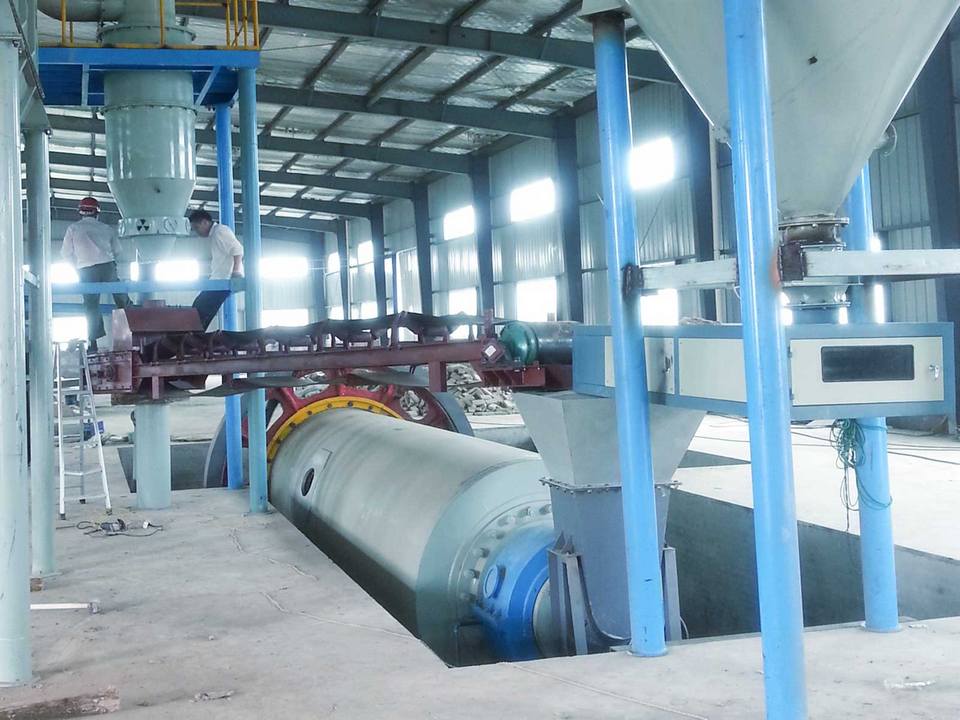
- Raw material size
The particle size of the raw material affects the output and quality of the ball mill. If the particle size is small, the output and quality of the ball mill will be high, and the power consumption will be low; if the particle size is large, the output and quality of the mill will be low, and the power consumption will be high.
- Material ease of grinding
The grindability of the material refers to the degree of difficulty of the material in the grinding process. According to the national standard, the grindability index wi (kWh / T) is adopted. The smaller the value, the better the grind, otherwise the harder it is to grind.
- The water content of the material to be ground
The grinding of the ball mill can be divided into two methods: dry and wet. For dry milling, the water content of the abrasive has a great influence on the output and quality of the mill. The higher the water content of the abrasive material, the more likely it is to cause full grinding or paste grinding, reducing the grinding efficiency, and the lower the output of the grinding machine. Therefore, materials with higher moisture must be dried before grinding.
- Feed temperature
If the temperature of the material entering the mill is too high, the impact friction of the grinding body will be generated. If the temperature in the mill is too high, the ball will stick, which will reduce the grinding efficiency of the mill and affect the output of the mill. At the same time, the thermal expansion of the rolling mill barrel affects the long-term safe operation of the rolling mill. Therefore, it is necessary to strictly control the temperature of the material being ground.
- The fineness requirements of the grinding material
The finer the requirements for fineness, the lower the output, and vice versa, the higher the output. In some areas, excessive emphasis on fineness does not meet the requirements of economic production. For example, in the cement industry, actual production shows that when the product fineness is in the range of 5-10%, the fineness is reduced by 2%, and the output will be reduced by 5%. When the fineness is controlled below 5%, the output of the mill will decrease even more. Therefore, choosing the right product fineness is also an important factor to improve the output and quality of the ball mill.
- Grinding process
For ball mills of the same specifications, the closed-circuit process can increase the output by 15-20% compared with the open-circuit process; in closed-circuit operation, selecting the appropriate separation efficiency and cycle load rate is an important factor in increasing the output of the mill.
- Powder selection efficiency
The sorting efficiency of the closed-circuit crusher has a great influence on the output of the crusher. Generally speaking, the efficiency of the classifier is higher, which can improve the grinding efficiency of the mill. However, the classifier itself cannot play the role of grinding, so the function of the classifier must be combined with the grinding function of the grinder to increase the output of the grinder. Production practice shows that the efficiency of the one-stage closed-circuit long grinding separator is generally controlled at 50 ~ 80%. The ideal separation efficiency should be determined through multiple experiments.
- Cycle load rate
Circulation load rate refers to the ratio of recycled powder (coarse powder) to finished product. In order to improve the grinding efficiency of the mill and reduce the phenomenon of over-grinding in the mill, the cycle load rate should be appropriately increased. However, if the circulating load rate is increased to a very high level, there will be too much material in the mill, thereby reducing the grinding efficiency.
- Add grinding aid
Some grinding aids will affect the grinding effect, because most of the organic substances of commonly used grinding aids have strong surface activity, which can accelerate the crack propagation of the material and reduce the amount of fine powder during the grinding process of the adsorbed material on the surface of the material. The mutual combination between the two improves the grinding efficiency, which is conducive to the energy-saving and high-yield of the ball mill.
- Ball to material ratio
The ball-to-material ratio is the ratio of the mass of the grinding body to the mass of the material. If the ball-to-battery ratio is too large, it will increase the useless work loss of the impact friction between the grinding body and the liner, increase power consumption and reduce output. How to choose the ball-to-battery ratio and ball-to-battery ratio of the ball mill is a common problem in actual production.
In addition to process factors, the model, parameters, and the work of production and maintenance personnel also affect the production and quality of the ball mill. The energy-saving and high-yield ball mill is a systematic project, and each link is interrelated and restricts each other. Only comprehensive consideration and close cooperation can achieve better energy-saving and high-yield effects.
Common problems of ball mills and solutions to failures
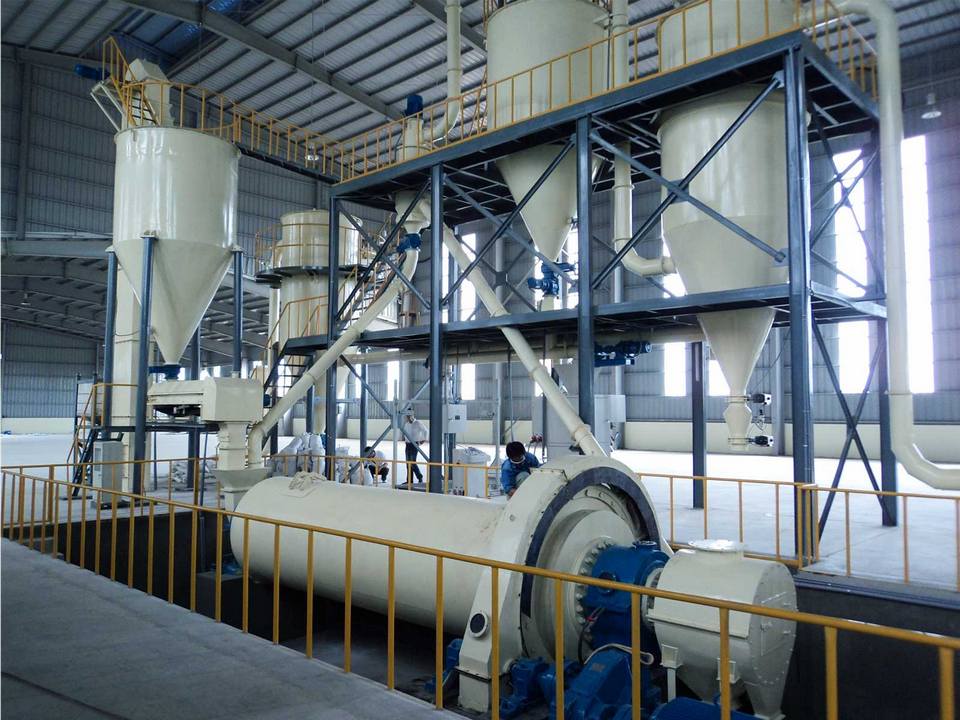
1. When the ball mill is running, there is a regular percussive sound, and the sound is loud. When the ball mill rotates, the liner hits the grinding cylinder of the ball mill. Judge the position of the liner of the ball mill according to the sound, find out the loose bolts and tighten them separately.
2. The temperature of the bearings of the ball mill and the motor has risen, exceeding the requirements. Try to feel the bearing by hand. If the temperature is too high, check and handle the ball mill from the following points.
(1) Check the lubrication points of each part of the ball mill, and check whether the brand of lubricating oil used is consistent with the factory instructions.
(2) Check whether the lubricating oil and grease of the ball mill have deteriorated.
(3) Check whether the lubrication pipeline of the ball mill is blocked, or the lubricating oil does not directly enter the lubrication point, and the insufficient amount of oil causes heat.
(4) The side clearance of the bearing bush of the ball mill is too small, the clearance between the bearing bush and the shaft is too large, and there are too many contact points, forming a uniform oil film on the bearing bush.
(5) Too much or too little grease in the rolling bearing of the ball mill will form rolling elements. Stirring the grease will generate heat, and the heat is not easy to disperse. If the lubrication is too little or poor, add enough oil according to the regulations, generally 1/3 ~ 1/2 of the bearing clearance.
(6) The sealing device of the hollow shaft at both ends of the ball mill body is too tight, or the iron part of the sealing body is in direct contact with the shaft.
The above problems should be dealt with in an appropriate way. Only when the side clearance of the bearing bush is too small or the bottom contact angle is too big, an oil jack must be used to lift the grinding cylinder, and the bearing bush should be drawn out from one side of the shaft and scraped separately.
3. The bearing of the reducer of the ball mill is overheated: In addition to checking the temperature rise of the bearing of the ball mill, check whether the vent of the reducer is blocked and clear the vent.
4. The ball mill motor produces vibration after starting, the main reasons are as follows:
(1) The gap between the two wheels of the ball mill coupling is too small to compensate for the displacement caused by the self-seeking core when the motor is started.
(2) The alignment method of the ball mill coupling is incorrect, which causes the two shafts to be misaligned.
(3) The coupling bolts of the ball mill are tightened asymmetrically, and the tightening force is different.
(4) The outer ring of the ball mill bearing moves.
Treatment method: Adjust the gap between the two wheels as required to make the two shafts concentric. Tighten the coupling bolts symmetrically with the same torque.
When the rotor is unbalanced, the ball mill rotor should be pulled out for static balance.
5. The ball mill reducer drives the ball mill to produce greater vibration
(1) The balance shaft of the ball mill and the reducer is not in a straight line
When the mill was installed with the liner, the secondary grouting was not carried out, or the anchor bolts were not tightened after the secondary grouting. Rotating the mill barrel with a hoist causes one end of the mill barrel to shift, and the two shafts are not in a straight line. The reducer drives the mill to cause vibration.
Treatment method: readjust so that the axis of the ball mill and the axis of the reducer are on the same plane axis.
(2) Large-scale ball mills are bulky and heavy, causing the foundation to sink and shift. Set up a settlement monitoring point next to the foundation, observe and adjust when the settlement is found.
6. Abnormal running sound of ball mill reducer:
The normal operation sound of the ball mill reducer should be uniform and stable. If there is a slight knocking sound or hoarse friction sound on the gear, there is no obvious change during operation, you can continue to observe, find out the cause, and stop the ball mill for processing. If the sound becomes louder, stop the ball mill inspection immediately.

